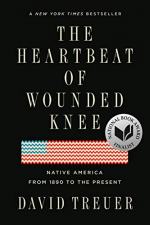|
This section contains 1,697 words (approx. 5 pages at 400 words per page) |

|
Summary
As events in Europe disrupted trade with the far east, the Spanish, French, Dutch, and British sought new trade routes and sources of raw materials. They employed five strategies to achieve colonial domination: violence, including warfare, torture, and slavery; cultivation of dependency; intermarriage; religious conversion; and language.
Archeological evidence suggests the Americas were settled as early as 19,000 years ago. Native origin stories tell of arrival in this world from beneath the earth or placement here by a heavenly creator. Indigeneity is a central tenet. In their telling, Native Americans are original inhabitants, not migrants.
In the Southeast, Spanish expeditions were characteristic of the pattern of disruption: disease, slavery, starvation. By the time the United States entered the region, tribes had banded together into amalgamated groups. In response to the U.S. campaign to depopulate the region of Native inhabitants, the...
(read more from the Part 1, Narrating the Apocalypse: 10,000 BCE-1890 Summary)
|
This section contains 1,697 words (approx. 5 pages at 400 words per page) |

|




